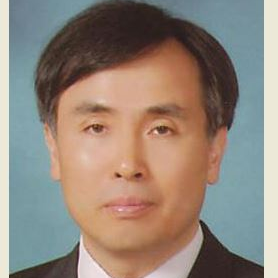State-of-the-Art Nanomaterials for Energy Storage/Conversion and Catalysis in Korea
A special issue of Nanomaterials (ISSN 2079-4991). This special issue belongs to the section "Energy and Catalysis".
Deadline for manuscript submissions: closed (31 December 2022) | Viewed by 7851
Special Issue Editors
Interests: energy storage; sucpercapacitor; photocatalysis; catalysis; chemical sensor; graphene; nanocomposites; nanoparticles; metal oxide; metal sulfide; carbon nanotube; carbon nano-onion; MXene; MOF; layered double hydroxide; wastewater treatment; hydrogen production; clean synthesis; graphene aerogel; supercritical fluid; ionic liquid
Interests: biomaterials; biosensor; ionic liquid; drug delivery system
Special Issues, Collections and Topics in MDPI journals
Special Issue Information
Dear Colleagues,
This Special Issue will cover a wide range of nanomaterials related to energy storage/conversion and catalysis currently studied in Korea. Research topics include but are not limited to the following:
- Design and synthesis of nanomaterials for batteries, supercapacitors, fuel cells, solar cells, catalysts, and sensors
- Structure, morphology, performance, and synthesis and reaction mechanisms of nanomaterials
- Applications in energy storage, energy conversion, energy production, synthesis of chemicals, treatment of environmental waste materials, detecting toxic or hazardous materials, and etc.
All research in the above categories is suitable for submission if the major elements of research have been carried out in Korea or by Korean researchers. Any international collaborative research with Korean researchers is also welcome.
This Special Issue introduces the state-of-art research on the topic “Nanomaterials for Energy Storage/Conversion and Catalysis in Korea” with the hope to promote collaboration between Korean and international researchers for the betterment of the world.
Prof. Dr. Jae-Jin Shim
Prof. Dr. Yun Suk Huh
Guest Editors
Manuscript Submission Information
Manuscripts should be submitted online at www.mdpi.com by registering and logging in to this website. Once you are registered, click here to go to the submission form. Manuscripts can be submitted until the deadline. All submissions that pass pre-check are peer-reviewed. Accepted papers will be published continuously in the journal (as soon as accepted) and will be listed together on the special issue website. Research articles, review articles as well as short communications are invited. For planned papers, a title and short abstract (about 250 words) can be sent to the Editorial Office for assessment.
Submitted manuscripts should not have been published previously, nor be under consideration for publication elsewhere (except conference proceedings papers). All manuscripts are thoroughly refereed through a single-blind peer-review process. A guide for authors and other relevant information for submission of manuscripts is available on the Instructions for Authors page. Nanomaterials is an international peer-reviewed open access semimonthly journal published by MDPI.
Please visit the Instructions for Authors page before submitting a manuscript. The Article Processing Charge (APC) for publication in this open access journal is 2400 CHF (Swiss Francs). Submitted papers should be well formatted and use good English. Authors may use MDPI's English editing service prior to publication or during author revisions.
Keywords
- Nanomaterials for Energy Storage
- Nanomaterials for Energy Conversion
- Nanomaterials for Catalysis
- Battery
- Supercapacitor
- Solar Cell
- Fuel Cell
- Sensor
- Photocatalyst
- Environmental Catalysis
Benefits of Publishing in a Special Issue
- Ease of navigation: Grouping papers by topic helps scholars navigate broad scope journals more efficiently.
- Greater discoverability: Special Issues support the reach and impact of scientific research. Articles in Special Issues are more discoverable and cited more frequently.
- Expansion of research network: Special Issues facilitate connections among authors, fostering scientific collaborations.
- External promotion: Articles in Special Issues are often promoted through the journal's social media, increasing their visibility.
- Reprint: MDPI Books provides the opportunity to republish successful Special Issues in book format, both online and in print.
Further information on MDPI's Special Issue policies can be found here.







